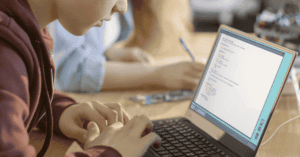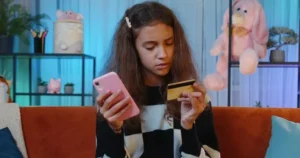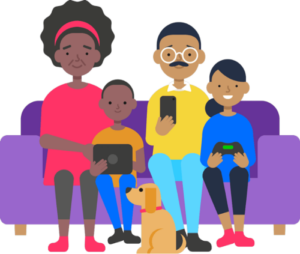Internet Matters experts give practical advice and tips on children and young people’s wellbeing and how, if it does, is affected by technology.
What does ‘normal’ look like in children’s interactions?
Many parents and carers will have found themselves amending their timelines and boundaries in terms of their children using screens and phones.
The impact of not being able to connect in person with wider family and friends is a very real threat to all of our wellbeing. So, for now, that will require flexibility in terms of screen time.
Whilst aspects of ‘blended learning’ may be here to stay, at least for a while, as physical restrictions ease it will useful to revisit with young people the boundaries that were in place prior to the lockdown and consider why and how they were put into place.
This is also a useful vehicle for young people to reflect on the impact of technology on their lives and how they think it will be on most value to them moving forward.
Well brains like predictability for a number of reasons, the first being it helps them be lazy and focus on the things that matter, such as the new/the novel because those are the things that may be a threat to me (the brain/body of the person).
For example, have you ever moved something in the cupboards, only to find you went back to the cupboard it used to be in automatically? Or perhaps moved the coffee table only to walk into in the day after? How many times did you then walk into the coffee table after that? Probably not many because the brain remembers danger quickly. Now if I keep moving the coffee table you have to keep paying attention to where it is and changing your behaviour accordingly.
This is your new normal, you now focus on the danger in front of you before you can be comfortable in your automatic movement through the room.
Although it can be concerning when a child falls in love with a new hobby, measuring our concern by how much time they are spending at their screen isn’t helpful. While children and teenagers need a balance of different activities, if a child is getting school work done, eating with the family and taking part in outside pursuits, we don’t need to worry even if they play video games for many hours.
The danger of this blanket worry over screen time is that we forget to engage with the actual activity our child is enjoying. Spending time watching a child play, rather than helicoptering when it’s time for them to stop, enables us to appreciate what it is they are doing. We can then guide their play from an informed position.
How can you manage children’s digital wellbeing?
How best to support a child or young person who is seeing things online that cause them to be upset very much depends on the age and stage of the child.
In the case of younger children, parents and carers may choose to sit with their child throughout the video conversation or at least in very close proximity so they can respond to events in real-time. With older children, it is still useful to be nearby, perhaps with the conversation taking place in a family room, but to supervise unobtrusively.
It is of value to have a conversation prior to a video call or engaging in the live chat during a game, exploring the risks that may be associated, how they might feel and how best to respond. Children and young people should be reminded that they can share with their parents or carers their experiences of any of the issues that they encounter without judgement and that they will be supported to find a solution.
Children will keep using the strategy to manage their emotions that previously worked, however sometimes learning to adapt takes time. It is normal. This is where I use stories like the above to acknowledge that life is changing and so must their new way of being and its okay to sometimes not see “where the table has been moved to?”.
As a parent having a conversation with your child that you also are adapting, learning and doing your best can be the regulator to help them see they are also okay not to know. Imagine if the story above involved you wearing a blindfold too! (Use this metaphor story with children over the age of about 6/7 and see what they suggest, their answers are always amazing and you might just learn from them too).
Video games, like any media, aren’t good or bad in their own right. How helpful or how much of a hindrance they are, depends on the context in which someone plays them.
Video games create a virtual space in which to play, connect with other people and challenge our intellect, reactions and imaginations. These are spaces that tell stories as well as invite us on adventures or to partake in competitive battles.
This means that video games can offer children substantial wellbeing benefits. Many games provide space to talk about important themes, or actually address difficult topics directly.
In recent months, I’ve seen children in the families I work with find calm, control and connection in the games they have been playing. Particularly in online games where they can keep in contact with friends.
To capture these experiences, which can be hard to find for non-gamers, I created some lists for parents and carers:
- Games to Play with Grandparents
- Games that Offer Calm
- Games that Encourage Exercise
- Games that Build Resilience
Complementing online game time (where a child connects with and talks to friends) with video games we play together can ensure that it is anchored as a healthy part of family life. This enables teens to talk to use more openly if they are finding their gaming is getting too overpowering, or if things that happen in their games unsettle them.
Along with some lists of games, I’ve created for resources for families such as AskAboutGames.com and the PEGI ratings offer excellent information on how to set up limits and controls on gaming hardware. Doing this with your teenager is a great way to engage their hobby and to agree on healthy limits for it.






